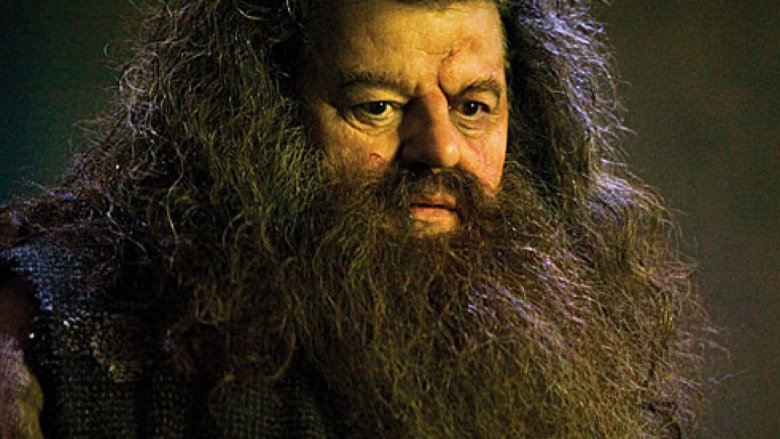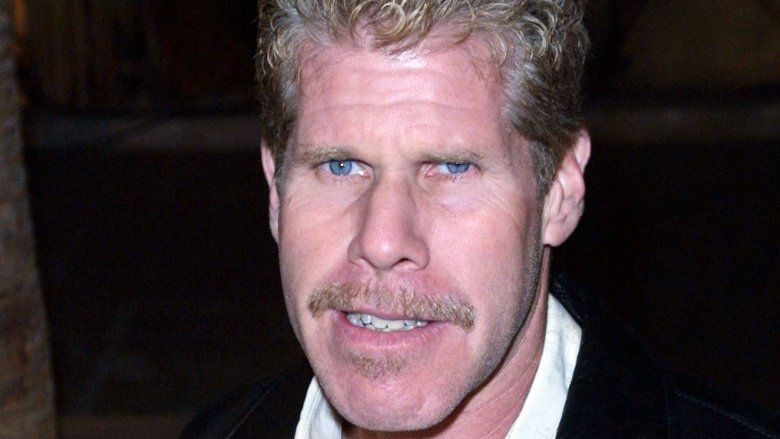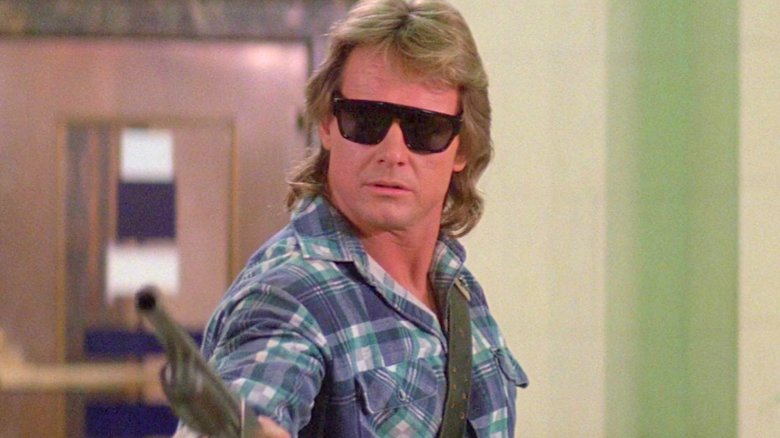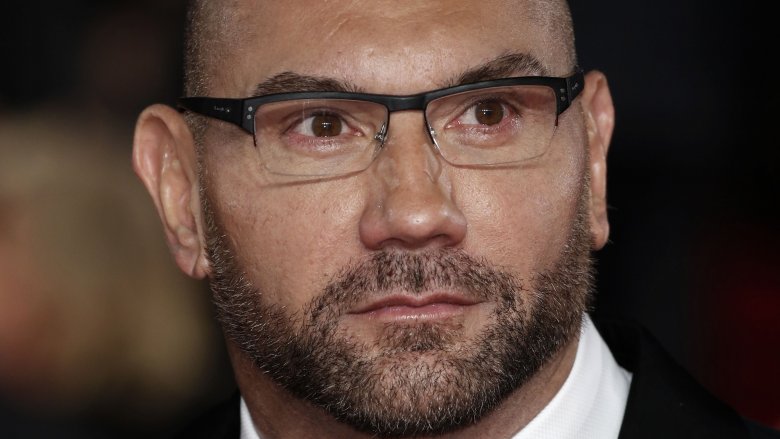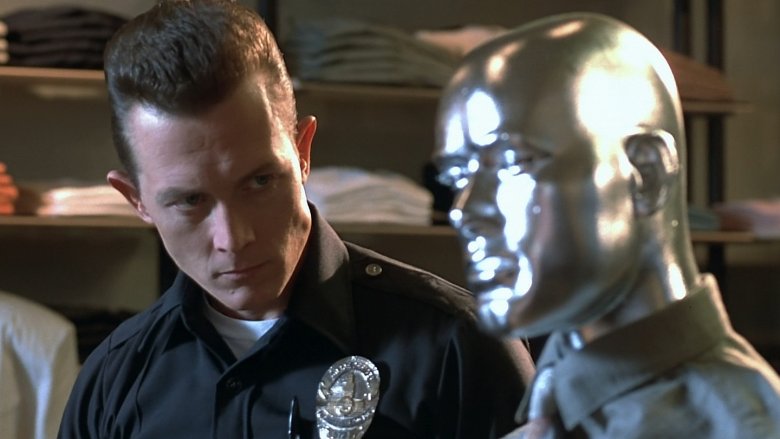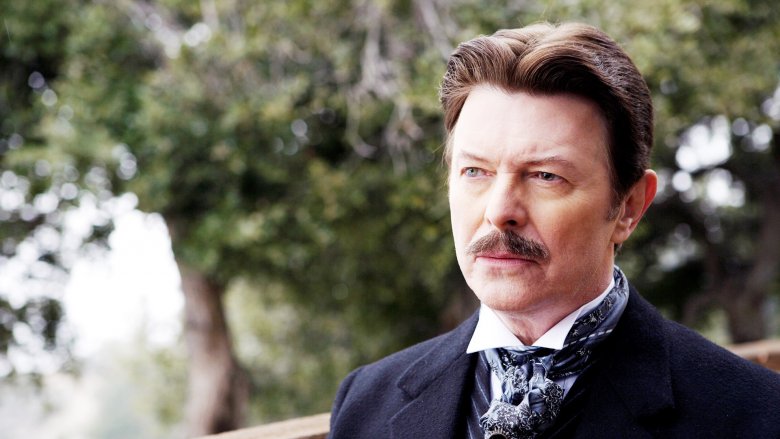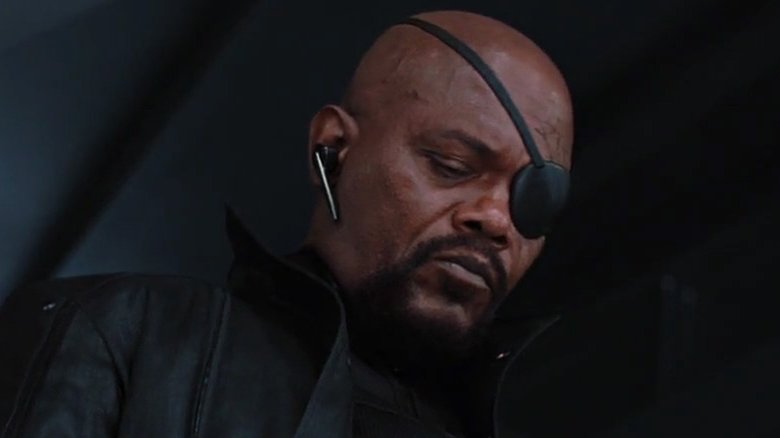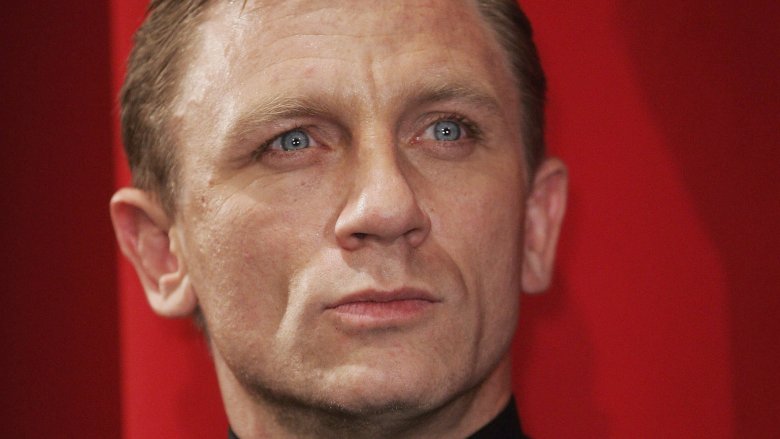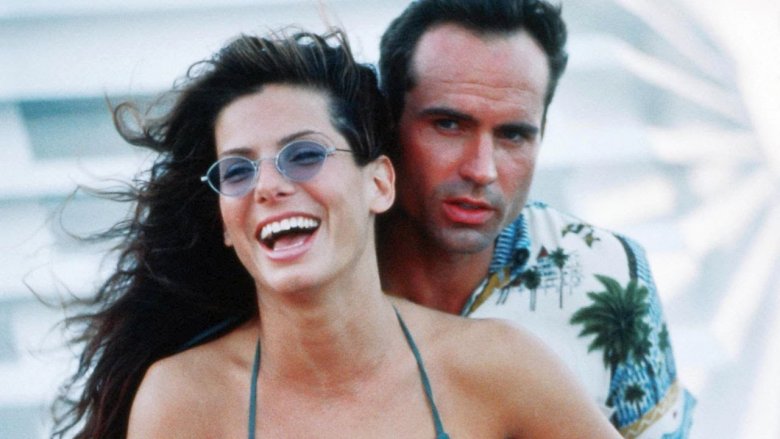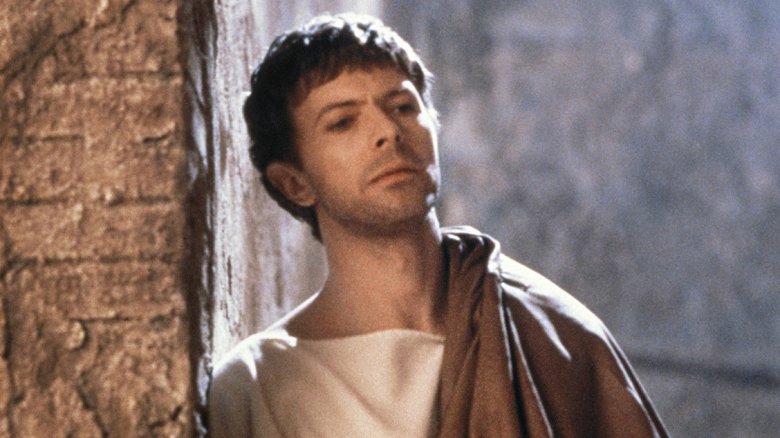Movie Roles That Were Only Ever Offered To One Person
While casting key roles in high-profile films, it sometimes seems like Hollywood looks at every star in the industry before settling on their (usually obvious) choice. These are roles, however, that were destined for one actor—sometimes despite rumors to the contrary—and in most cases, it's easy to see why.
Rubeus Hagrid, Harry Potter
Casting for the Harry Potter film series was pretty spot on, partly due to the "U.K. only" casting policy mandated by author J.K. Rowling. Several American actors who were keen to get in on the Hogwarts action were turned away without so much as an audition, including the legendary Robin Williams, who had his eye on the role of Hogwarts groundskeeper Rubeus Hagrid. But even if the funnyman had been able to put on his best mock Cockney accent and convince producers he actually was British, it wouldn't have helped—Rowling herself only ever envisioned one man for the role.
That, of course, would be veteran character actor Robbie Coltrane. It's tough to imagine anyone else in the role of the gentle half-giant, whom Rowling based on a Hell's Angel biker she once knew. Coltrane explained: "He was just huge and terrifying. And then he would sit down and talk about his garden and how his petunias had been very bad that year." Fans will recall that Hagrid's first appearance—delivering the infant Harry to the Dursleys—is aboard a flying motorcycle, which now makes a little more sense.
Hellboy
For most of his career, Ron Perlman was known as a talented actor who virtually always appeared under layers of makeup and prosthetics. His first film role was as a neanderthal in 1981's Quest for Fire, and his breakout gig came in 1987, starring opposite Linda Hamilton in the TV series Beauty and the Beast. Perlman admits to having low self-esteem early in his career, saying, "I was more comfortable behind the masks than being myself." But one director held a slightly higher opinion of him: Guillermo Del Toro, who had been tapped to direct an adaptation of the Dark Horse comics series Hellboy.
So intent was Del Toro on casting Perlman in the title role that he turned down a bigger budget, a bevy of A-list actors, and two studios in his quest to get the film made. In particular, Universal virtually forced Del Toro to talk with multiple major stars about the role, only for Del Toro to repeat his mantra to executives after every meeting: "Yeah, I like the guy... but I like Ron Perlman more." According to Del Toro and Perlman, this went on for seven years before the project finally landed at Columbia.
Nada, They Live
John Carpenter's They Live is a dystopian sci-fi B-movie masterpiece, and if you've never seen it, we suggest watching it right now. Its protagonist—never referred to by name in the film, and only named in the credits as "Nada"—is a stone-faced homeless laborer who stumbles upon the reality that enslaving aliens are living in our midst, controlling all of society, and deals with this information by chewing bubblegum and kicking ass (and he's all out of bubblegum). It's a role in which Carpenter's fans would have expected to see Kurt Russell and practically nobody else, but Carpenter's longtime muse wasn't even considered. Nobody was, except a professional wrestler with a rather limited acting resume.
The film's many aficionados know that casting "Rowdy" Roddy Piper as Nada was a sublime move. He brought depth, low-key charm, and a rugged everyman presence to the role that may have been impossible for a more polished actor. Carpenter knew who he wanted from the beginning, telling Nerdist
, "In this particular case, what I really needed was an everyman. I needed a working-poor guy... almost down and out. And Roddy was perfect for that; just absolutely perfect, so I never thought of anybody else, really." We submit that Piper possessed another required quality: the physicality to convincingly pull off the greatest fight scene in film history.
Drax the Destroyer, Guardians of the Galaxy
Former wrestler Dave Bautista is pitch-perfect as the hyper-literal juggernaut Drax the Destroyer in Marvel's Guardians of the Galaxy movies. There were persistent rumors that the role was first offered to Jason Momoa, who then apparently flipped franchises to portray Aquaman in DC's Extended Universe. While Momoa confirms that he did audition for the role of Drax, he says he removed himself from consideration before an offer was made, and that talks never got as far as fans speculated.
"Dave is perfect for that role, for Drax. It didn't really fit in my time because I've done so many things where I don't say much and I'm colored up and I have my shirt off again," Momoa explained. Visiting the set of the first film in 2013, Yahoo! Movies put the final nail in the rumor's coffin, confirming with cast and crew that Bautista was the only actor offered the role.
The T-1000, Terminator 2: Judgment Day
Before his breakout role in Terminator 2: Judgment Day, Robert Patrick was the quintessential struggling actor. Arriving in Hollywood in the mid-'80s, he kicked around for years—living in tiny apartments, or even out of his car—before being cast as a heavy in 1990's Die Hard 2. Not long after, he was called in to audition for a mysterious James Cameron project for which he wasn't allowed to see the script, but was simply asked to show an intense presence. "I walked in and I said, 'Let me turn my back to the camera and just roll on me... and I did this sort of snap-back-around and looked right into the lens of the camera," Patrick told NPR. "[Cameron] leaned back and went, 'Whoa, what's that?'"
Patrick got his screen test the very next day, landing the role of the T-1000, the liquid metal cyborg tasked with killing young John Connor. While Patrick was the only actor offered the role, he wasn't the only one considered—Cameron's first choice was actually British rocker Billy Idol. The T-1000 even resembles Idol in the film's early storyboards, but the musician had recently broken his leg in a motorcycle accident and was unable to even audition.
Nikola Tesla, The Prestige
Generally considered to be the better of 2006's "magicians at the turn of the century" films, Christopher Nolan's The Prestige is a solid thriller about the lengths to which two old-timey magicians would go in order to screw with each other. Hugh Jackman and Christian Bale headed up an excellent cast, which included an absolutely inspired choice to play insane genius Nikola Tesla: David Bowie, the Thin White Duke himself.
The late Bowie had a famously otherworldly presence, and Nolan never considered anybody else to portray the enigmatic inventor. His casting was justified with the character's stunning entrance alone, one only Bowie could have pulled off so effortlessly. Whatever your opinion of Nolan's work, most film fans can agree on one thing—he has a strong eye for casting.
Nick Fury, Marvel Cinematic Universe
In 2002, Marvel Comics artists Mark Millar was asked to redesign some classic characters for Marvel's Ultimate line. One of these was S.H.I.E.L.D. director Nick Fury, the eyepatch-sporting superspy who had previously been portrayed in live action by David Hasselhoff in a little-remembered TV movie. Millar envisioned his version of Fury as an update of the character's cool '60s spy aesthetic, and—deciding the name had a blaxploitation bent to it—decided to cast his Fury in the image of "the coolest man alive," Samuel L. Jackson. Completely without Jackson's permission.
Unbeknownst to Marvel's writers, Jackson was a huge comics fan and was fully aware of the homage from the beginning. The update was well-received by fans, and Marvel Studios overlord Kevin Feige made an on-the-fly decision to cast Jackson as Fury in Iron Man's famous post-credits stinger—a scene that wasn't even in the original script. The rest is history, as Fury became the glue that holds the Marvel Cinematic Universe together and the latest in a long series of iconic roles for the beloved actor. In 2015, Millar finally met the coolest man alive, and asked Jackson if he was upset about the artist's blatant exploitation of his image. The response was exactly what you'd expect: "F— no, man. Thanks for the nine-picture deal."
James Bond, Casino Royale
In 2005, James Bond fans lost their collective minds when it was announced that Daniel Craig would reboot the role, taking over from Pierce Brosnan, star of the previous four 007 installments. While most agreed he was a fine actor, many feared Craig was too soft—not to mention he had the audacity to be blond. Word got out that Hugh Jackman, Ewan McGregor, Colin Ferrell and Eric Bana had all been considered, adding to the furor, but producer Barbara Broccoli shot this down, calling the list a complete fabrication.
In fact, it was Craig that producers had in mind from the start, even if he was initially reluctant to take the role. Broccoli explained: "We approached him and he wanted to read a script. We always wanted him but didn't know if he was going to do it, so we met other people. But we never offered it to anyone but him. He just seemed like he was a man who is a 21st-century Bond." Craig, of course, went on to make the role immediately his own, starting with the hugely successful Casino Royale.
Alex Shaw, Speed 2
Fans of action movies in the '90s were excited when it was announced that Speed, the 1994 bomb-on-a-bus thriller starring Keanu Reeves and Sandra Bullock, would be getting a sequel. They were much, much less excited when it was announced that Reeves would not be returning for Speed 2: Cruise Control, and that Bullock's character would be the film's lead. Filling the sidekick role would be up-and-coming star Jason Patric, whose turns in The Lost Boys and the 1991 undercover cop potboiler Rush had earned him critical praise.
In fact, the role of Alex Shaw was Patric's from the beginning, as he was hand-picked by director Jan De Bont. Originally announced as the sequel's "new lead," Patric ended up in a thankless role in an aimless film playing second fiddle to a co-star with model good looks and no action star bonafides. This was, perhaps not coincidentally, about the time that his star in Hollywood stopped rising. Patric made a mid-2000's transition to Broadway, and has appeared in a variety of low-profile film projects since.
Pontius Pilate, The Last Temptation of Christ
Released in 1988, Martin Scorsese's The Last Temptation of Christ was about as controversial as mainstream films get. Its unconventional portrait of Jesus earned condemnation from religious leaders, while the U.S. Catholic Church declared the film "morally offensive" and the head of one Christian television network proclaimed that anyone who saw it was "committing a deliberate act of blasphemy" and was headed straight to hell.
Of course, the fabric of society held firm in the wake of the film's release, and today it's taken to task more for its questionable casting choices—Willem Dafoe as Jesus, anyone?—than for causing a worldwide breakdown. But for the role of icy Roman government official Pontius Pilate, Scorsese made the one choice nobody could bring themselves to criticize.
"David Bowie was my first and only choice for Pontius Pilate," he said at the time of the film's release. "I never considered anyone else." His performance was singled out among critics as being more appropriate to the material than his co-stars, proving Scorsese understood that casting is much the same as life—when you've gotta have David Bowie, you've gotta have David Bowie.
